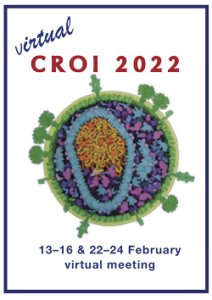CROI 2022: UK study reports diabetes mellitus in 9% of HIV positive Africans in the UK on stable ART
1 April 2022. Related: Conference reports, Coinfections and complications, CROI 29 (Retrovirus) 2022.
Kirk Taylor, HIV i-Base
 CROI 2022 included a UK study looking at the prevalence of diabetes mellitus (DM) in HIV positive Africans on ART. [1]
CROI 2022 included a UK study looking at the prevalence of diabetes mellitus (DM) in HIV positive Africans on ART. [1]
The GEN-AFRICA cross-sectional cohort study enrolled HIV positive participants that attended 15 UK clinics between 2018 to 2020 and evaluated risk factors for DM.
Participants (n=2,308) were from West (36%), East (33%), South (24%) or Central Africa (7%), were female (62%) and heterosexual (87%). HIV was well managed with 99% on ART, viral load of <200 copies/mL (94%) and median CD4 count of 556 cells/mm3 (IQR 409 to 721). Mean age was 48.0 years [SD 9.9].
Common comorbidities were obesity (44%), hypertension (31%), and proteinuria (22%), whilst only 4% had cardiovascular disease. Type 2 diabetes was reported for 9% (n=216) and was most common in participants over 50 (72%).
DM and obesity increased with age but the association between DM and obesity was lost after multivariate analysis. Female participants were more likely to be obese (52% vs 31%, p<0.001), but males were more likely to have DM (12.8% vs 7.4%, p<0.001).
The authors emphasise the importance of routinely screening HIV positive Africans for DM, especially if they are older than 40.
comment
These data highlight associations between HIV, age and obesity and diabetic risk. The approximate prevalence of DM is about 6% in the UK general population, which will be older than an HIV cohort, but also likely to be less engaged in care.
However, this was a small cross-sectional sample and longitudinal data are needed to further understand diabetic risk in HIV positive African populations.
Associations between DM and obesity in this study are limited by use of BMI measurements rather than measures of central obesity.
Earlier studies have reported that HIV is associated with higher rates of DM than the general population, and that this also increases with age. [2]
These results highlight the importance of the BHIVA recommendation for baseline assessment for diabetes and annual metabolic assessment including HbA1c and lipid profile if aged >40 years. [3]
References
- Hardy G. Increased prevalence of diabetes in HIV positive people. HTB (26 June 2017).
https://i-base.info/htb/31692 - Hamzah et al. Age and obesity as risk factors for diabetes in Africans with HIV. CROI 2022. February 12-16, virtual. Poster 604
https://www.croiconference.org/abstract/age-and-obesity-as-risk-factors-for-diabetes-in-africans-with-hiv/ - BHIVA. BHIVA guidelines for the routine investigation and monitoring of adult HIV-1-positive individuals 2016 (2019 interim update).
https://www.bhiva.org/monitoring-guidelines
This report was first published on 20 March 2022.

